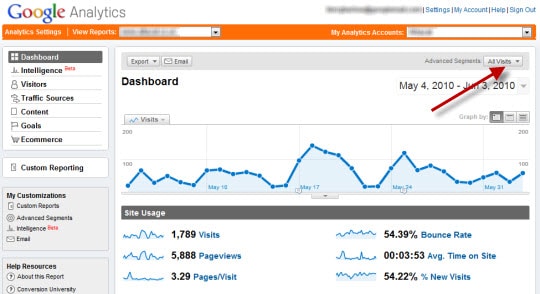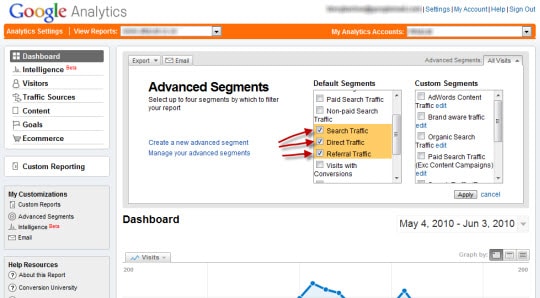This morning sees the first New Media Breakfast being run in conjunction with Renfrewshire Chamber of Commerce and of course fatBuzz.
It’s an updated version of the Facebook event recently run in Glasgow and Edinburgh. The speakers are fatBuzz’s Gordon White and our very own Attacat Joel. Hannah took full notes last time which you can read here. I’ll try to capture the updates below.
The event was kicked off with the trailer for the forthcoming Facebook film (bound to be an Attacat trip if you want to join us).
Gordon noted the stats showing social media use exceeding use of search engines for the first time in May (Attacat view: think quality not quantity 😉 )
But how does it fit into marketing? Proctor & Gamble aim to establish meaningful Facebook communities around all their brands in 2010. Should you be doing the same?
A fun and at the time, ground breaking, use of Facebook was the Ikea photo tagging viral featured in this video
Privacy Update
Look into Facebook places settings in privacy. It’s possible, with the default settings, that your friends can check you into places without you being there and without your permission (been to a brothel recently?). Easily changed in your settings.
New Case Studies
Phoenix Car Company, a leading Scottish Car Dealer are providing the venue for this mornings event, so some time was spent looking at their Facebook page.
(Attendees arriving for the breakfast at Phoenix Honda)
Attacat Joel looked at how BrewDog (the social media savvy Scottish brewer) could use Facebook ads to attract drinkers into their Aberdeen pub using Facebook ads.
Apparently there are still 80 wannabee ninjas in Edinburgh (according to Facebook profiling options)
I’m sure I missed other updates but there’s masses on the post from the previous Facebook event.
Thanks to Renfrewshire Chamber for having us!
The Edinburgh New Media Breakfast this month coincides with the Pope’s visit to town.
(Tickets & Info about this Breakfast | More about New Media Breakfasts (#NMB))

![]() photo credit: roblisameehan
photo credit: roblisameehan
The Pope has been gracious enough to ensure that the worst of traffic disruption will not start until well after the Breakfast has finished. We assume this is because of his known enthusiasm for this month’s topic: blogging (The breakfast will be led by Gordon White from fatBuzz, I’m going to be doing a ten minute slot on SEO & blogs as part of the Breakfast)
There will be some closures in place that will make getting to and from the breakfast a little more difficult than usual. To save you the trouble of deciphering the various traffic info documents, I’ve been through them in detail and here is my interpretation.
Getting There
Gordon will start his talk at 8 (i.e. more promptly than usual) so please aim to arrive a bit earlier. This is to ensure that it is easier to get away afterwards (see below).
- By Car – At this time the only places to avoid are Holyrood, Holyrood Park and part of Princes St. Crossing Princes St should not be too difficult as you will be able to get across at the Mound or the Bridges. Parking is going to be less straight forward as parking around the venue is going to be suspended (see shaded area on map for suggestions for nearest on street parking)
- By Bus – several routes are operating on special timetables and altered routes. Detailed info here.
- On Foot – Shouldn’t be a problem
Getting Away
The Mound will be shut by the end of the Breakfast so if you need to drive to the north of Edinburgh, use the bridges.
At 10.15 most of the arterial routes coming from the West including the Western Approach Road and Corstorphine Road will be shut until 11.30 as his Holiness comes into town from the airport. It is anticipated that the breakfast, including the Q&A will be finished by 9.30 at the very latest to give those who need to get west the chance to get clear without any problems
Almost all roads will be reopened by 3.30 in the afternoon so getting home in the evening should be no problem at all.
Viewing the Pope
If you want to see the Pope whilst you are in town, then from what I can work out he will be coming down Princes St at around 12ish. My daughter and I will try to catch him between 12.30 and 1.00 as he makes his way up towards Morningside for lunch. If you want to join us let me know!
Attacat Ben was talking this morning at the Glasgow New Media Breakfast on his pet topic of Google Analytics. (The presentation will be repeated in Edinburgh next week)
Ben set the attendees five bits of home work that they could do today to make changes that will improve their site.
1. Referring Traffic with Goals
Identify the referring sites delivering you the most goals. Think what you can do to increase the number of visitors from that site. Can you build a relationship with that site? Can you convert the existing traffic more easily.
Google Analytics – Referrals and Goals from Attacat Internet Marketing on Vimeo.
2. Keywords Report with Goals
Find the 10 keywords driving the most conversions (goals). Then see where you are ranking in the organic listings. Then seek to improve the ranks on these phrases where you can.
3. In-site search
Your home work is to either set it up, or to examine the report. Look at the top ten searches and then put them into the search box on your site. Can you improve the experience? Could you stock the product they are looking for?
4. Play with Advanced Segments
In the Analytics dashboard, have a play with advanced segments. Look for rises and falls in particular segments when compared against the rest of your segments. This sounds much more complicated than it is:
- In the “Dashboard” (first report page you come to) click the “All Visits” button
- Select the three major traffic source segments (Search Traffic, Direct Traffic and Referral Traffic in addition to the all visits one that was pre-selected)
- Look for lumps and bumps!
5. Utility pages on Exit Page Report
Exit pages can be difficult to read but if you focus in on the “utility pages” (delivery page, faq, about us) then you can get insight. When someone visits these pages, they have a question in mind. If you have a high exit rate, that question is not being answered. Try to work out what that question could be.
After two days of presentations and a good few hours going through my notes, here is the list of points that I took away from the organic search and social media tracks at SMX Advanced London (the premier high level search conference this side of the Atlantic).
I’ve bolded what I consider to be the very best tips.
What gems have I missed here? Were you on the paid search or conversion tracks? Please share your SMX insights in the comments.
Wolfram Alpha Keynote
- Wolfram Alpha is getting better by the day and should be added to the researcher’s arsenal. Fact Engine Optimisation anyone? Beular?
- Wolfram Alpha’s forthcoming widgets and plugins will be great ways to add content to your website. Keep an eye out for a sponsored link program too
2010 Ranking Factors
- Recommended reading: Random surfer vs Reasonable Surfer patent (Links on the page that people are more likely to click may be considerably more valuable than those they are not likely to click on)
- Tweets may or may not be treated as links by Google but likelihood is that they will be as this is where the bulk of the freshness links are occurring.
- There is a suspicion that data is not flowing from Facebook to Google. Bing on the other hand does have relationships and therefore likely to see effect of Facebook on SERPs here first.
- There is a strong correlation between position of keyword in title and rank [compelling evidence for keyword first, brand second].
- H1s not an important ranking factor (position on page more important than whether the header is defined by an H1 or not)
- Keywords in Alt attribute slightly better correlated with rank than use of H1 – but only slightly
- Latent Dirichlet Allocation (LDA) (similar to Latent Semantic Indexing) looks very promising as a ranking factor so modify your SEO copywriting. Clue
- Are 301s passing less link juice? Perhaps canonicals are the solution. Perhaps you’ve just got to get off your arse and get the links moved.
- Now easier to get your home page ranked than internal pages. Has the value of internal linking been reduced?
- Mix up your anchor text more than you used to. Non keyword anchors are probably now a must
- It may be that more effort is now required to make pages appear unique. Have your search results style or category pages taken a hit?
- Have a process for checking website source code and robots.txt for hacking attacks – they are getting more subtle. Can use link tools to find strange anchor text
- Worry less about code validation and more about amount of code. Reduce and compress
- If a page in SERPs does not correlate with standard ranking factors, it could be due to freshness algo. An algo that is still evolving and not all that clever in the UK yet (Often see US results in QDF results in UK)
- Canonicals require care
- Archive your Twitter content, Twitter isn’t
Leveraging Digital Assets (aka Universal Search)
- It’s easier to rank universal content than conventional content due to less competition and less sophisticated algorithms
- Yahoo Answers content is very trusted and in some cases treated as universal content so worth having a proactive Yahoo Answers strategy
- Press releases viewed as universal content (Ask Jeeves)
- Search engines love structured data such as FAQ and help pages
- “Master the micro & inject it into the macro” – e.g. understand how to rank in Product Search, then gain benefits of being in main rankings
- Use microformats in general but specifically for product search (SEOGadget.co.uk has good guides to microformats)
- Video can improve the ranking of a site that has initial rankings
- If self hosting video, use commonly used video players to ensure that it recognised as video by the search engines
- Can use Facebook meta tags to specify that you have video in your page
- Your XML site map for Google should include video url, website url, meta data and compelling thumbnails
- One to watch: YouTube are experimenting with allowing you to link back to your site
- Google News is for everyone, not just news sites
- Images are important for getting into news (use standard sizes 300×250 or 180×150). Make alt tag same as headline
- To get into news your site needs to have articles from three different authors posted within the last seven days. Include author names in page and Google News XML
- If get rejected from Google News, contest it and be Billy Big Balls about it
- Consider separating out industry news (so can submit to Google News) and company news (keep as blog content)
- Rather than use fake rating services, use the more expensive (but lower risk) services that have individuals with a real love for content
Link Building
- The Inconvenient Truth of Link Building – value of links has changed as a result of low quality/no quality rot
- Zemanta and Outbrain worth investigating as part of a “link development” strategy
- There’s mixed opinions on the SEO benefit of Facebook like buttons but agreement on marketing benefit
- Google Reader’s “More Like This” functionality has a role to play in link building/development
- Speed is of the essence in gaining links. Yahoo Pipes can be used to keep you swift. Monitoring press release sites will show you what the news is about to be.
- Look into PuSH Bot if you aren’t already
- Link Building is about Relationship Building (PR anyone?)
- TagCrowd is useful for visualising excel anchor text data
- Reclaim old links – use tools such as Majestic or sift old server logs.
- Most influential links helping a competitor rank are likely to be those that link to the actual page ranking.
- Have a strategy for getting links from government and university sites (See Kelvin Newman’s excellent tips here)
- Narrowing down a large list of potential link opportunities to blogs updating daily will allow you to rapidly produce a list of target sites to start building relationships with – especially if you have a new SEO tool to pitch 😉
Keyword Research
- Create a keyword “Editorial Calendar” that considers seasons, scheduled events, trends etc and dovetail it with your plans for PPC campaigns, blogging, twitter updates, YouTube videos etc – prepare them in advance
- Use PPC for real keyword research
- Add Mozenda (a scrapping tool) to your keyword research armoury by thinking laterally. Combine it with Google XML API to scrape Google Suggest. (Alternative suggestion 80legs)
- Other research tools that are useful with imagination include: Xenu Link Sleuth, Microsoft ISS, Mechanical Turks
- Keywords can not be translated
- The length of the keyword long tail varies by language. Spanish short, Dutch and German longer than English
- Yahoo Suggest will through up different keyword ideas to Google Suggest
Here is a quick recap as well as presentation slides from Richard Gregory’s session on Yahoo! & Microsoft Search Alliance: The New Search Powerhouse by Latitude
Social Media Measurement
- There is no simple formula for measuring value from social media. Majority of companies are still very unsophisticated in the way they are measuring social media. [Opportunity]
- Focus social media measurement for e-commerce on the impact it has on awareness, conversion rates and return rates
- Consider which search phrases should be attributed to social media rather than SEO
- Focus social media on customers you have, not the customers you want
- Social Media ROI may be reduced costs (e.g. of customer service). Consider costs of not doing social media
- Consider calculating social media impressions and compare to standard advertising impression metrics
- The number of hyper engaged individuals may be your most important social media metric
- Paid Social Media tools tend to improve workflow and are better at sentiment analysis when compared to free offerings
Video Marketing
- Use the YouTube Keyword Tool
- The YouTube algorithm is simpler, more based on popularity and tagging than the Google algorithm
- Blog post idea: Build top 10 lists from great YouTube content e.g. Mashable top 10 wedding dance videos on YouTube
- Consider using RDFa (meta data for video)
- Virals: “Shit that people like to share”
- Don’t neglect paid promotion for encouraging content to go viral
- Lest we forget: E mail is still the most used medium for spreading content
- As you deserve a break from tips, here are the videos used to illustrate what works:
- funny ,
- unbelievable
- pose a question ,
- informative (good for B2B – if it has real insight)
- or piggyback on cult phenomena “talent imitates, genius steals”
- In B2B even a few views can = successful viral
- If someone embeds your video, work out how you can drive traffic to them
- According to a YouTube Senior Industry Manager initial results on tests of using Google’s audio to text capabilities within the ranking algorithm has been very favourable. Interpret as not being used yet but likely to become a signal in due course. He also suggested use of Google Goggles type technology for ranking videos was someway off.
The Facebook Opportunity
- The Content Network does work. It’s just called “Facebook Ads” and it’s quality score slap free
- Recruiting? Use Facebook Ads to target competitor brands.
- Facebook ads need to be refreshed regularly. Special offers, linkbait, localised and personality driven ads work well
- Apply keyword research approaches (especially lateral thesaurus) to Facebook interests (but remember they are interests, not keywords)
- Segment landing pages by social groups rather than keywords. Keep your landing pages consistent with your ads. Think 2, 3 or 4 stage sales process
- Facebook is awash with marketing opportunities and is the future of demographic research. Take advantage whilst you can. And don’t rule out B2B
- Philanthropy rocks on Facebook
- Friend your competitors friends (but do not fake it). The refresh button is your friend (find more than six of your competitors friends). Can also use Facebook ads to target competitors friends
- Use Google Ad Planner (imagine this being delivered in a Baz Lurhmann “Use Sunscreen” manner http://www.youtube.com/watch?v=xfq_A8nXMsQ)
- Remember Facebook controls your fans and could separate you at any time. Get e-mail addresses
- LinkedIn profiling could be very interesting
Crisis and Reputation Management
- Journalists are hungry for information during a crisis – this is opportunity but speed is key
- Plan for a crisis possibilities: have press releases pre-written, PPC campaigns built, FAQ page written etc so you can saturate SERPs quickly
- You know you need to grab your brand name on social media sites. You might not have done it on these ones yet: Crunchbase, slideshare, Knowem and Scribd
- Some opportunities to increase “friendly” real estate proportion in the SERPS: Set up site links. Put in a sub directory. Update wikipedia page. Do a press releases to get into news. Go to affiliates, gave them a page to put on their site. Ditto for job sites. Add a linked in profile.
- “everyone has right to speak, but not necessarily be heard”
- Consider buying sites that appear on brand searches and have negative comments on them (through third party)
- Monitor both brand phrases and names of key personnel for negative comment
- If a site has a page with negative comments ranking, see if you could link build to another page on the same site or try injecting a new page (e.g. to a community site)
- Yahoo Analytics has much deeper detail about individuals coming onto site than Google Analytics
- Value of SERPs reputation management is still not properly appreciated.
Other
- Infographics garner backlinks when they show lots of data, complex ideas or boring topics in an aesthetically pleasing way.
- Give your best linkbait/virals to a high profile site in return for a link.
- Thank those that link to you – it opens the door for next time
- Investigate the Social Media for Firefox plugin
- Bait and Switch is now just Bait and build a Trusted site (some of the time anyway)
As Andrew Girdwood explained so eloquently many of the presentations at SMX Advanced (at least the ones I attended) fell short of the “Advanced” label but there were notable exceptions that more than made up for some of the overly basic or salesy presentations.
The stand out session was the Killer Facebook Tactics “show”. And “show” it really was. If you want a KPI for measuring the way a presentation is being recieved, then the number of times the door slams as people sneek into the auditorium after the presentation starts is a pretty good one. The word got out on Twitter and the room kept filling up.
Guy Levine set the tone with a fast moving humourous presentation that uploaded a huge number of tips in 11mins 38 seconds (his timing, not mine). It was the perfect compliment to what came later.
The sensible filling was provided by Marco Covsaro. But then came the conference’s unique duo.
With a charachter like Marty Weintraub you might feel that you wouldn’t have a chance of shining as a co-presenter. However Marty’s colleague Merry Morud more than held her own.
(Calm before the storm: the Facebook panel prepare)
Their talk was a call to action to take advantage of Facebook opportunities, delivered with pure comedy. Guy and Marty then provided one of the most informed Q&As of the show. The session is undoubtedly the one that will bring the biggest benefit to our clients (as much for the philosophy installed as for the tips)
Other highlights included the Ranking Factors in 2010 seminar, Link Building and various contributions from Mikkel deMib Svendsen. Barak Berkowitz’s keynote provided insightful thought to the way the web is going.
The greatest travesty of the event? Bringing Rand Fishkin over to the UK and only giving him 12 minutes.
Key Takeaways
We’ll compile a list of the best tips tomorrow but here are the key things that I am thinking about as a result of the Conference:
- Facebook is being underestimated as a marketing medium – Facebook data and Ads rock (oodles of tips here)
- Are 301s something to be avoided? (See Rob Kerry discussion)
- The need to investigate Mozenda (Sam Crocker’s top tip)
- Feel strangely guilty for this one: Making use of the YouTube Keyword Tool
- Spending more time with Yahoo! Analytics (mentioned a few times)
- Making use of Wolfram Alpha as a research tool and wait for their widget and API release. (Keynote notes)
- Jumping on the infographic band wagon. (as per Chris Bennet notes)
- Getting more scientific about SERP reputation management (MdM special)
- Taking website security more seriously
- Archiving Twitter data
- Being less sceptical about alt tags, more cynical about H1s, paying greater attention to Latent Dirichlet Allocation and loving home pages more. (Rand Fishkin Research)
(My complete notes from the two days are available here. I’m working my way through them bolding what I deem to be the best tips and will pull them altogether into a list in the morning)
If you were at SMX, what were your key take-aways?
Our popular Give It Up! session is where our panel of experts share some of their favourite and largely overlooked tips. Then we turn to the audience for more sharing. At SMX Advanced London, we’re introducing our social media edition of the panel, where you’ll learn some fantastic ways to gain even more traction, traffic and reach via social media marketing.
Moderator: Ciaran Norris, Head of Social Media Marketing, Mindshare Worldwide
Q&A Moderator: Kevin Ryan, Chief Executive, Motivity Marketing, Inc.
Speakers:
- Chris Bennett, President/Founder, 97th Floor
- Parks Blackwell, Senior Client Development Manager, Range Online Media
- Melissa Campbell, SEO Consultant, Distilled
- Ciaran Norris, Head of Social Media Marketing, Mindshare Worldwide
(The below are Tim’s notes from the “The Give It Up, Social Media Edition” session at SMX Advanced. They have been posted during the session and will be tidied up later – more SMX coverage here)
Chris Bennett
Infographics
Infographics working very well. Can go very viral and pick up a mass of backlinks. Can create a link profile that competitors can’t replicate. What makes them good?
- Lots of data
- Complex ideas
- Aesthetically pleasing
- Otherwise boring topics!
Some commercial sites being banned in Digg, can get them removed. Rumours that commercial sites going to be looked on more favourably. But in meantime solution is to set up separate site – viral hubs e.g. visualeconomics – over 50000 natural banklinks in 9 months.
Guest virals
Take viral content and find high profile sites and contact directly and get them to put it on their site in return for link bank with anchor etc and let them take the traffic. Infographics do very well here.
Other Viral Tips
- reach out to all those who are linking and thank them so can create a relationship with them. Can then e-mail them directly and 9/10 they’ll put up your content
- track all your success – e.g. outgoing clicks to signups
- Social Media for firefox plugin
Parks Blackwell
Basics that people are missing out on
Content
Must have a content strategy. repeating same messages then you will lose followers. OK to align with marketing calendars but must have more updates “in the trenches” stuff.
Transparency
No one wants to be part of a community that isn’t genuine. Allowing feedback is a must. Post REAL updates. Get a voice that understands the customer
Monitor
Make a decision before you start. Know what you want to get out of it and correlate metrics with this. Changing metrics half way through can alter transparency.
Melissa Campbell
The laws and guidelines in the UK that you are probably breaking!
ASA
ASA applies to virals and therefore can result in violations. Things going wrong:
- not making the source clear (false identities)
- being wilfully offensive to gain attention
- misuse of email database e..g run a competition and then put them on newsletter list
Requires a complaint to be made before you will get in trouble
Digital Economy Act
Know where your images, videos etc come from and credit properly. Written by music industry for music industry
SMX Presentation
Q&A/Audience Tips
- Enforcement? MC: Likely to be difficult to enforce, lot of misunderstanding.
- How long does it take to create typical infographic? CB: Couple of days, though research can take time. Use students to do research. Clients given chance of one revision only.
- Observation: people like questions to be answered in the open when communicating through the likes of Twitter. CB: Put out name of senior bod that they can contact.
- When doing microsites, are you redirecting? CB: In some cases but mentioned site was so successful that haven’t. Tend not to do 301 anymore, much better to own trusted site.
- With new version of Digg, will all banned sites be unbanned? CB: Probably July, in meantime e-mail them. Tip don’t submit best thing next day, build account back up slowly.
- How rife are fake names in academic world? MC: Can be very embarrassing if caught out. Such an obvious thing to do, its likely to be happening.
Your client just rang – they’ve had a product recall and negative reports are flying in both traditional media and on the web. The Twitterverse is atweet with snarky comments, and even worse, with links to bad press, causing those stories in turn to get top ranking in web search results. If you’ve ever had to deal with a reputation management issue you know this is a nightmare scenario – but don’t despair. Social media sites offer a key opportunity to influence search results. This session looks at the crucial role they can play.
Moderator: Andy Atkins-Kruger (AA), Managing Director, WebCertain
Q&A Moderator: Kevin Ryan (KR), Chief Executive, Motivity Marketing, Inc.
Speakers:
- Arthur Coleman (AC), CEO, OnlineMatters, Inc
- Mikkel deMib Svendsen (MS), Creative Director, deMib.com
- Kevin Gibbons (KG), Director of Search, SEOptimise
- Kristjan Mar Hauksson (KH), Director Search, Nordic eMarketing
(The below are Tim’s notes from the “Social Media, Search & Reputation Management” session at SMX Advanced. They have been posted during the session and will be tidied up later – more SMX coverage here)
Kristjan Mar Hauksson
(The volcano is surprisingly small!)
What Happens When Bad News Goes Live?
- 98% of journalists go online! Even respected publications often just take press releases and publish it. They are incredibly hungry for information. This is where the opportunity is in a crisis.
- Speed of movement is key
- Need to be able to see who looks at the story – did the BBC visit your site? Did your competitors visit?
- The Basics
- You need a plan in place before problem happens e.g have PPC campaign built ready to go. Have basic info ready to go. (seek to saturate search results etc
- forsee possible scenarios
- be ready with press releases
- know how long it takes for your site to be indexed
- Listen e.g. Google alerts, Vocus, Clara, Trackur, TweetBeep, Feedster & Technorati
- Evaluate. Is non-reaction an option? What type of opportunity is this? e.g. volacno chance to target adventurous singles
- Act: Source of problem is often source of opportunity
- You need a plan in place before problem happens e.g have PPC campaign built ready to go. Have basic info ready to go. (seek to saturate search results etc
Kevin Gibbons
Social media for online reputation management
- Google SERPs and Twitter stream is your new home page
- 70% trust online consumer opinions from people the don’t know. 41% trust search advertising
- Build brands around reputation, not products – Branson. Once reputation is tarnished can be uphill struggle, particularly in online world.
- By being engaged now, can deal with negativity when it goes wrong
- I hate ryan air site must get 612,000 negative clickthroughs per month (based on search volume for ryan air and 3% click through rate)
- United Airlines Break Guitar example – 8 million views ($180 million lost revenue estimate)
- Tip 1 – claim social media brand profiules. Crunchbase, slideshare, Knowem and scribd lesser known ones suggested
- Tip 2 – Develop clear social media strategy
- Tip 3 – Use social media to open opportunities – opens up guest blogging opportuities, radio show requests etc
- Tip 4 – New look Google could increase views of fresh data
- Tip 5 – Look out for Google suggested search for how your brand is being percieved e,g, “Google are”
- Amazon Mechanical Turk – trick Google into thinking that there are lots of positive searches. Not expecting it to last.
- Question: Are Ryanair proving that having a bad reputation can be good for bottom line?
Arthur Coleman
Social media and SEO for online reputation managemt
- SM can be used in unique ways due to flux of realtime search algos – can exploit this in the short term. If you don’t combine it with long term SEO techniques you will fall down list.
- Case study: large telecom. Negative article from ex employees, also legal battle appearing in results. Pushed page down to bottom of first page by: Set up site links. Put in a sub directory. Updated wikipedia page. Did press releases to get into news. Went to affiliates, gave them a page to put on their site. Went to job sites and gave them same content. Did a linked in profile.
- Sphinn – use to gain rankings on vanity search
- Theory: “AuthorRank” – by participating in community, Google think you have authority which raises not only your own site but also your presence on other networks.
- “Social Media Channel Amplifier” – could use a keyword rich username to gain this author rank. Here’s How:
- choose username inc brand and keywords
- buy name on knowen – set up accounts
- set-up ping.fm
- link all accounts
- post content
Mikkel deMib Svendsen
Six steps to search reputation management. The below is the outline to the creation of a superb metric for monitoring progress in improving your SERPS reputation
- everyone has right to speak, but not necessarily be heard 😉
- Identify brand and personnel keyphrase
- Assess how you are doing in major SERPS
- Analyse negative comments
- Develop right strategies for your goals
- damage control
- tail gating
- Execute – warning high risk of backfire
- Monitor impact
Suggest analysing top 20 or 30. Identify negative ones and summarise points. Score each page to ultimately assess how bad each keyword is, scaled for rank (no.1 negative listing gets high weight, no20 less). Can use this matrix to monitor performance over time. Execs love it! Labour intensive. Google Alerts allows you to monitor and decide when you need to do a rescore.
Analysing negative sites – determine how optimised to decide if its possible to push down. Can you buy the site and close it down?
Can you remove critical sites from Google? Yes! Not reliable but likely to hurt you more (not a good long term solution)
Can you hack it? Yes you can. But don’t – it will haunt you. Hack robots.txt
Pushing down bad sites:
- Use own site
- Use partners
- Use 3rd parties (business listings etc)
Buying is often easy and cheap solution – even those who are vitrilolic. Do it through third party
Make a different page on a site rank better – are there more positive pages on the site about you? Link build to it.
Manipulate the source: Can you inject new pages on the site e.g. on a community site. If it’s a major newspaper “create a bait the journalist can’t resit”. Consider commenting to get your side over – in particular supply new evidence
Q&A
- Risks of Duplicate content of Author rank manipulation? AC: Seeing it change on a daily basis. Different content on different sites.
- Iceland legislation coming in. Is Iceland going to become hell whole of reputation management? KH: Don’t know. If there are changes, there will be opportunities. Take advantage of today
- How do you apply “push down” to competitors? KH: Look at your company assets on page 3/4 or beyond and come up a strategy to push up.
- Has anybody managed to reverse any hardcore Google Suggest spam? MM: Very difficult,needs a lot of searches to make it happen but this is not always the case so is possible in some instances. KG: Saw it “work” with a travel company that launched in new countries [so could encourage user searches with competitions etc]. KH: One idiot being negative is not always something to worry about as users are intelligent. MM: Google suggest is very personalised
- Buying websites could encourage an SEO? MM: If an SEO steps up, then MM will start stepping up!
- Recommended Tools? KH: Yahoo Analytics has much deeper detail about individuals coming onto site. Majestic SEO – great to see anchor text. Vocus. KG: Google realtime search. MM: Reputation management in search still not being appreciated by companies (bit like conversions are ignored). Example of company spending 100 mill on new tagline, ended up having to pay 400,000 to buy a parody site. Should have been protected before hand
Your Facebook pages – your wall, groups and fan pages – are a parallel universe to your public web pages. Just as you implement search engine optimization tactics to improve web page rankings, Facebook offers many opportunities to enhance your visibility.
Moderator: Chris Sherman (CS), Executive Editor, Search Engine Land
Q&A Moderator: Kristjan Mar Hauksson (KM), Director of Internet Marketing, Nordic eMarketing
Speakers:
- Marco Corsaro (MC), Managing Director, 77Agency
- Guy Levine (GL), CEO, Return On Digital
- Merry Morud (MM), Search Marketing Account Manager, aimClear
- Marty Weintraub (MW), President, aimClear
(The below are Tim’s notes from the “Killer Facebook Marketing Tactics” session at SMX Advanced. They have been posted during the session and will be tidied up later – more SMX coverage here)
[This seminar was very special. The notes below will make little sense because the pace and energy of the presentation was on a different planet but there are nuggets of gold within. The key take away was that the killer tactic is actually Facebook Ads – a seriously under utilised form of marketing that has to be taken seriously]
Expecting announcement on 500 million user announcement tomorrow. Chris Sherman rightly warns that Facebook may be today’s thing, but not necessarily tomorrow’s so take away the tactics.
Guy Levine
He put a QR code on slides. Will not be long before you can use these to get Facebook likes.
When you stick your head in the sand, everything looks cool but it presents your butt to the world. Facebook is here, like it or not.
You may think Facebook ads may not work but we have to learn how to use them. Facebook is different
Tip: Put name of competitor brand into Facebook ads to head hunt!
No quality score slaps.
Facebook is somewhere that people don’t want adverts.
Key to success:
- Special offers
- Linkbait e.g. as 4 ways to determine if it will be a boy or girl as oppossed to come and buy a steriliser here)
- Local
- Personality Driven (picture of person works well)
Extra Tips
- Keywords represent interest not search
- use Google conversion tracking
- put text into pictures to get round editorial – Facebook can’t read.
- Pay an admin to run your advertising on group page or give you admin access. Can also include affiliate links for payment
- Works well when you identify something people are passion about.
- Use ads to start a conversation
- Long running ads suffer
- Put the wrong people off clicking – joy of PPC model
- Often makes sense to generate leads rather than sales.
- Have consistent style of landing page to your advert
Marco Covsaro
Facebook opportunities. Good because:
- Reach (inc 100 million mobile users)
- Not just a direct response tool – fan page is as important as website. Apps and Open Graph. Facebook is a search engine and open graph represents attempts to build a new type of search engine
- Targeting Options are incredible – expect it to get better.
- Ever increasing user engagement opportunities – fan pages, facebook ads (see them as direct response), engagement ads (new ways of creating virality), social ads, apps (mass of opportunities), social plugins
- Sales pitch for the technology that track Likes, Comments, Clicks and Shares.
- Sales pitch for social ad bid management
- Seeing that customers are able to spend 10-15% of what spending on Google at similar or lower CPA
Merry Morud & Marty Weintraub
- Segmenting landing pages by social groups rather than keywords
- Facebook helpcenter recently updated. Can’t use Facebook as verb or screen captures. Well Facebook that.
- Branding in Facebook is very inexpensive
- Not all Facebook is direct response
- Don’t rule out B2B
- This is the future of demographic research
- Search is focus but no longer biggest piece of pie.
- Segmentation is very powerful. e.g. engaged women probably on a diet. Not going to sell retirement package to 14 year old. College students identified. Give teachers free stuff to teach the next generation to be fanatical about your products in years to come. 3000 people like swords
- Need to expand with lateral thesaurus as very easy to miss very large chunk of your potential demographic.
- Random global kick ass segments:
- green
- learn language
- pets
- kids
- daughters
- sons
- interior design
- holidays
- Christmas
- Hosting parties
- Enagaged
- Yoga
- Social Anxiety – sell them antidepresants
- Cooking
- Craft
- Gardening
- Organising
- Facebook is like the content network except it works!
- Philanthropy rocks on Facebook
- Privacy setting are WTF for average user
- Concept of trogan horse as a way to market
- Friend your competitors friends – industrial esponage but hey ho!
- Do not fake it, be who you are.
- “The age of radical profiling”
- “Sweaty and Incentuous Mix Babe” so please don’t bitch about privacy.
- Identify what people think about your competitor
- Organic social friending. Get involved in semi private conversations on other fan pages
- Refresh button is your friend – get to see more friends (6 featured each time)
- Take them outside as quickly as possible – easier to kiss them
- Recruit competitors facebook fans using Facebook ads.
- 4000 people who work at HVAC companies – yes it works for B2B
Q&A
- Can Facebook advertising be used by all? e.g. international moving company? MW: Target people graduating from medical school. Love children 45+ with daughter – sell them on who would they trust to move their daughter GL: Use AdWords
- How to target on Facebook? Facebook.com/advertising MC: can store segments for re-use. GL: Use ad planner to see language uses. MW: Take synonyms from adwords. GL: Keyword research is much more 3 dimensional – you are looking to interupt the conversation
- Click through rates? GL: If doing naughty recruitment can get very high. Much higher than Content Network. MC: CTR not right metric. GL: Look at impact on brand searches as a way of determining if branding is working.
- Facebook privacy escaping privacy scrutiny? MW: Zuckerberg doesn’t believe in privacy. Who owns the pipe will be interesting. GL: Everyone gives FB their data. Google takes it from trends etc. Leverage Facebook whilst you can. Important to get e-mail addresses as fans could be switched off.
- Facebook’s impact on search results over next five years? MW: Expect to see social network that excludes people soon.
- Theory on why Google users can’t be easily socialised? CS: personal view is that Google has always taken a very controlling way Google does stuff for us, not something we interact with.
- In a years time, will we still speak about Facebook? GL: Doesn’t matter, we just need to get in there and play. MW: LinkedIn profiling could be very interesting. Facebook will plateau but expect to see a lot of niche communities popping up where you can target. MC: Experiences show things move very quickly. MW: Do it now, its so cheap, awesome opportunity to build a household name.
YouTube is the leading online video destination. It’s also the leading video search engine (and by some measures the second largest search engine overall). But with more than 20 hours of video being uploaded each minute, it’s increasingly difficult to get noticed by YouTube viewers without going beyond video SEO and using innovative approaches that—at least for now—are little used and underappreciated. Tune in to this session to find out how.
Moderator: Andy Atkins-Kruger (AA), Managing Director, WebCertain
Q&A Moderator: Christine Churchill (CC), President, KeyRelevance.com
Speakers:
- Dara Nasr (DN), Senior Industry Manager, Google & YouTube
- Ciaran Norris (CN), Head of Social Media, Mindshare
- Avi Wilensky (AW), ceo/founder, Promediacorp
(The below are Tim’s notes from the “Advanced Tactics For Promoting YouTube Videos” session at SMX Advanced. They have been posted during the session and will be tidied up later – more SMX coverage here)
Dara Nasr
This presentation was a pure advert for YouTube advertising. And I paid to listen 🙁
Been with YouTube 3 yrs (previously TV advertising)
- Video accounts for 1/3 of all web traffic (bandwidth) 90% by 2013 (Cisco)
- BBC claim 50% of its content will be watched online by 2013
- 2 billion videos watched per day
- Smart phones increasing growth
- 24hrs of video uploaded every minute to YouTube. In UK 20% is now premium partner content (what advertising can be served against) as opposed to UGC
- YouTube accounts for approx 4% of time spent online
- Video is 50 times more likely to appear in natural search
- Google searches vs YouTube searches. YouTube likely to be more entertainment orientated. More about brand focus than reviews.
- YouTube search volume tool – compare and contrast with AdWords tool.
- Promoted Video Ads – CPC keyword targeted. Often use for “branded response” adverts e.g. O2 selling music tickets. Can saturate all buzz phrases if want – 15p per click average currently
- Can target by demographics
- Sharing with friends becoming more important. 10% of all YouTube video views are embedded on social sites e.g. Facebook
- Question: Ranking? YouTube algorithm is simpler, more based on popularity and tagging.
Avi Wilensky
(Works agency side for Sony Music)
Differences between channels
- User Channel – free
- Brand Sponsor Channel – requires 6 figure media commitment
- Partner Channel – rev share for selected users (adsense for video model)
YouTube Partnership Program
- Only open to established, good quality YouTubers. Have to apply. Higher standards than adsense. Gives quite a number of advantages including being able to claim and monetize their content via “Content ID” – allows Sony to add “Click to Buy” when song included in UGC
- Not just for big brands. Fred Figglehorn makes 100k per month, shot on flip camera improv series about a 6 yr old dysfunctional kid.
- Streaming Rentals (in Beta in US) – ad free monetise by rental similar to iTunes or Netflix. Potentially work well for niche topics.
Viral Videos
- Killer linkbait
- Example Shakira World Cup – getting people to upload themselves doing dance
- Blog post idea: Build top 10 lists from great YouTube content e.g. Mashable top 10 wedding dance videos on YouTube
- YouTube insight – Analytics for YouTube
- YouTube Captions – allows sub titles to be added to videos – accessibility
- YouTube Feather – cut down bandwidth use
- Creators corner – portal with tips and tricks. Includes AudioSwap for getting music you can use.
Video Site Maps – No downside to pushing content rather than relying on a crawl. XML feed managed through Webmaster Tools
Microformats – RDFa: meta type data for videos
Can upload directly from mobile by emailing youraccountcode@m.youtube.com
Ciaran Norris
How to get a video to go viral.
- What is viral marketing? “Shit that people like to share”
- Why? Lot of products simply not interesting enough in own right, viral offers opportunity for e.g. toblerone, milano cookies
- Can’t make a viral. All you can do is make great content and push it as hard as you can. Don’t neglect paid ways of promoting.
- First things first?
- Is your audience likely to upload videos to YouTube?
- Email still best tool for spreading viral
- YouTube itself is great example of a viral – made sharing easy. Ditto Hotmail – signature – make your product viral. virals don’t have to be video
- Virals that do well are: funny (e.g. will it blend), unbelievable (e.g. sunglasses catch), pose a question (e.g. look out for cyclist advert – missed moonwalking bear – made people think again), informative (good for B2B – if it has real insight) or piggyback or spoofs fo cult phenomena (e.g. wonderbra spoof of cadburys gorilla “talent imitats, genius steals”)
- Tip: Ask your community what to do next
- Tip: subtle embed of slogan e.g. “Never Hide” in dirt on car window – if you searched Google got taken to raybans site
- B2B – a few views could be viral
- Tips
- Headline: Make them “Exclusive”
- Thumbnail: plan your video to get middle of vid interesting
- Comments – let them roll
- Referrers – if people embed your vid, think how you can drive traffic to them
- Conclusion: Its the creative stupid.
Q&A
- Are there plans to change to CPC model? DN: Can purchase some space by CPC. However advertisers are used to CPM so now immediate desire to change.
- Copyright infringement. How often are search index updated? DN: Biggest probs are in music industry. YouTube recognises copyright music and alert record label who can choose how to deal with it. Do not serve adverts against UGC as impossible to police.
- Will audioswap be extended to allow UGC to be added? DN: Possibly
- Are there tools that show when best times to upload videos, what words to use etc? CN: No. DN: No CN: Mixture of art and science
- Algorithm? DN: Lot of work going on currently with voice to text type technologies for ranking that has proved very favourable [suggestion that not included yet but being worked on]. Image recognition technology likely to be a way off yet due to difficulties of moving image and variable quality. Work being done with premium partners first.


















